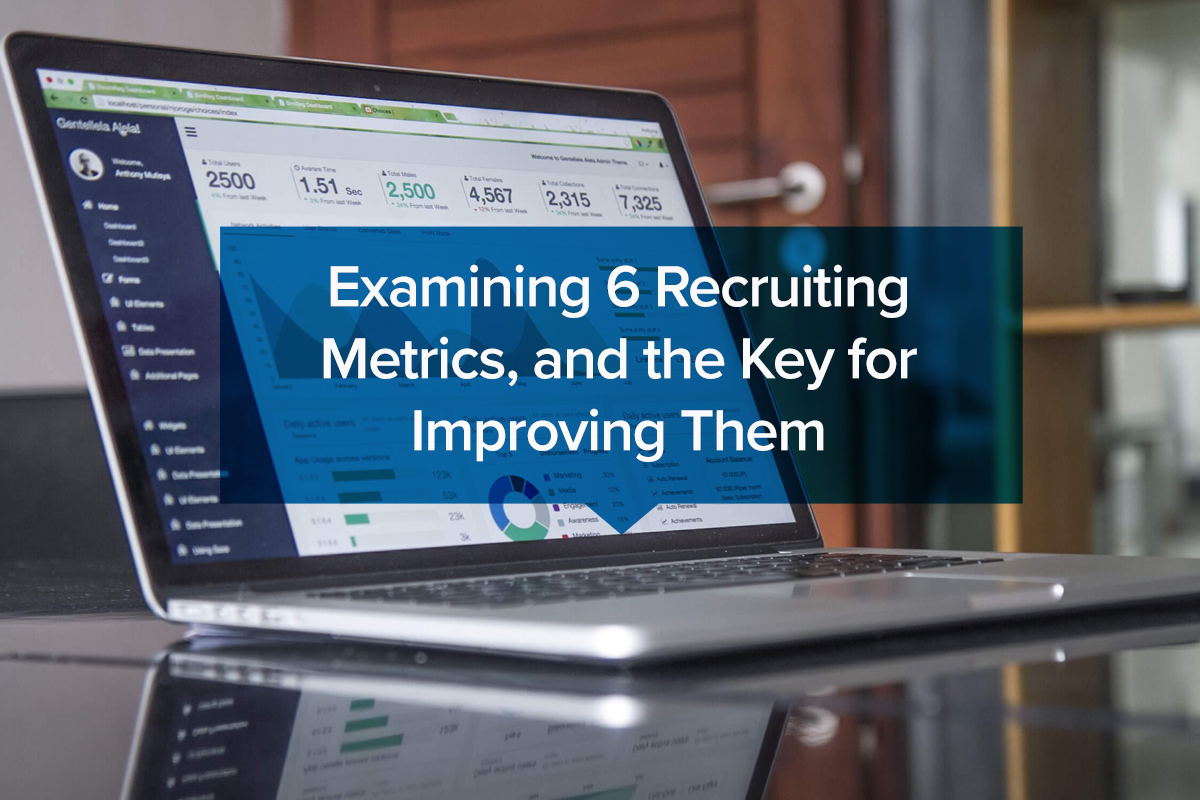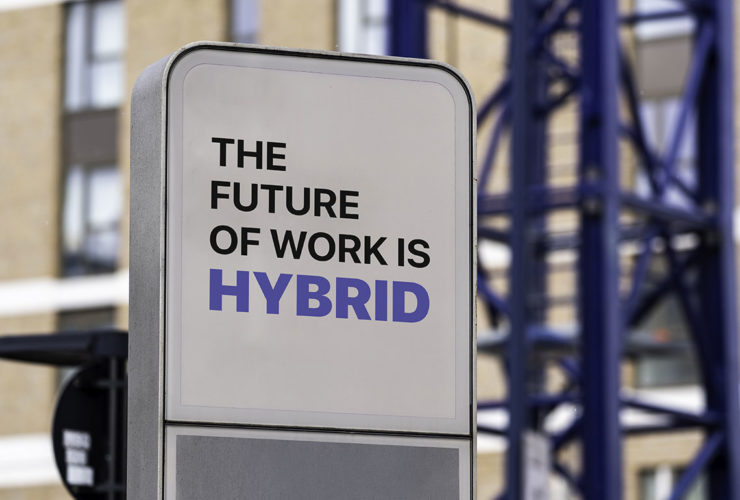How should recruiters and employers measure the recruiting process?
It’s a question without a consensus answer. There is no recruiting metrics gold standard because too many factors impact recruiting priorities and results—company size, industry, and job type to name a few. Yet to make intelligent adjustments to your recruiting process, and to evaluate the results of those adjustments, you need to measure something. But you also can’t measure everything, or you won’t get much actual recruiting done.
With that in mind, we’ve selected six metrics that you should consider evaluating in your recruiting process. After we go over them, we’ll discuss the key factor for improving whichever metrics you use.
- Time new hires stay at a company
What it is: Number of years that new hires remain with your organization.
Average value: According to the Bureau of Labor Statistics, the median number of years that wage and salary workers had been with their current employer was 4.2 years in January 2016 (the most recent time for which data is available), down from 4.6 years in January 2014.
Be aware: A number of factors can affect the median tenure of workers, including age, industry and occupation. For example, wage and salary workers in the public sector had more than double the median tenure of private-sector employees, 7.7 years compared to 3.7 years. Also, as LinkedIn’s Global Recruiting Trends 2017 survey shows, this metric is valued most by smaller organizations—those with 200 employees or fewer.
Use: For evaluating the quality of hire. A shortcoming here is significant time lag; if you make a positive change in your recruiting practices today that impacts the quality of hire, it could take years before there’s a significant corresponding positive change in this metric.
- Time to fill
What it is: Amount of time, typically measured in days, between when a job is opened and an offer is accepted.
Average value:
As per our recent hiring metrics research, the average time to hire and fill all IT Development/Engineering roles globally, it takes 33 and 68 days. However, this number can vary greatly depending on where you are located. The U.S and Canada take 56 days to fill and 33 days to hire while Asia takes 92 days to fill and 36 days to hire.
As of December 2016, U.S. jobs take 27.2 working days to fill, according to DHI Hiring Indicators. That’s slightly below the all-time high of 29 days hit in 2015, but significantly higher than 2009 levels (just over 15 working days).
Be aware: As recruiting software provider Workable notes, time to fill can vary greatly by industry and job type: “While the industry average time-to-fill for engineering in the US was 58 days, some roles had much lower numbers, like data scientist with 28 days. Meanwhile, hiring a senior QA engineer was taking 121 days on average.”
Use: For evaluating your sourcing and hiring processes.
- Time to hire
What it is: The number of days between a successful candidate’s first contact (e.g. they apply for the job) and their hire date.
Average value: eTeki research found that the data shows that interviews per hire for all engineering roles across the globe are 12. In America and Canada it’s 13 but in Asia 11 in 2022
A Glassdoor survey found that the process of getting hired in the U.S. took 22.9 days in 2014, up from 12.6 days in 2010.
Be aware: As with many recruiting metrics, the time to hire can vary greatly based on job type and other factors. “High-skilled jobs that require judgment, creativity, and technical skills generally require longer, more intense job-screening processes,” Glassdoor chief economist Andrew Chamberlain told SHRM.
Use: For evaluating the speed and quality of your screening and interviewing process.
- Hiring manager satisfaction
What it is: The level of satisfaction of hiring managers with your hiring process.
Average value: Not available due to different ways of calculating. A 2014 ERE study found that hiring managers tend to give recruiters a C-plus grade.
Be aware: An October 2016 study by workforce intelligence provider Visier found that 71% of hiring managers said that to increase the quality of people they hire, HR needs to improve its recruiting process.
Use: For evaluating the quality of hire.
- Submit-to-interview ratio (aka present-to-interview ratio)
What it is: The ratio of candidates submitted/presented to hiring managers to the number of given interviews.
Average value: A good submit-to-interview ratio in staffing is 3:1 or better, but in some industries can see as high as 6:1 or 8:1.
Be aware: If the ratio is high, possible causes could be poor screening, the recruiter not understanding the type of candidates the hiring manager is looking for, or the hiring manager being too picky.
Use: For evaluating the quality of screening and recruiter effectiveness. If your time to fill is high, a poor submit-to-interview ratio indicates lackluster screening may be to blame.
- Interview-to-offer ratio
What it is: The number of candidates on average a hiring manager needs to interview in order to make an offer.
Average value: We’ve been told an average interview-to-offer ratio is about 4.8:1. A good ratio is 3:1 or better.
Be aware: As Amy Caswell notes in a Recruiter.com article, a “high interview-to-offer ratio is a cause for concern because of the waste it creates — not just in the recruitment department, but also the wasted time the hiring manager invests in performing too many interviews.”
Use: For evaluating the quality of candidates submitted.
It’s All About Screening
No matter which metrics you use to evaluate your hiring process (the period beginning after candidates are sourced through the interview), the solution for optimizing them is the same. Great candidate screening.
If you consistently deliver or submit quality candidates in an efficient time frame to hiring managers—what we call delivering a high return on the interview—your metrics will look great. In fact, we’ve seen a company get its submit-to-interview and interview-to-offer ratios close to 1:1 through great screening practices.
Meanwhile, if you’re metrics need improvement, the solution is bound to be in improving your screening practices. Here’s a listing of quality candidate screening we recommend for tech roles (click the link for detailed descriptions of each step):
- Ensure the hiring manager provides a complete job description.
- Have a detailed intake session with the hiring manager.
- Filter resumes aligning with job requirements emphasized by the hiring manager
- Perform other prescreening activities (e.g. validating candidates’ identity and experience via social media, personality/work style assessments, automated reference checking, validating candidates’ IT certifications).
- During the initial conversation with candidates, evaluate for technical fit.
- Have candidates undergo rigorous technical interviews.
- Deliver technical interview videos and reports along with candidate shortlist to the hiring manager.
A Useful Resource
If you need help with calculating recruiting metrics, Glen Cathey’s Boolean Blackbelt sourcing and recruiting blog has terrific sourcing and recruiting candidate funnel and output calculators (spreadsheets) that you can download for free.







